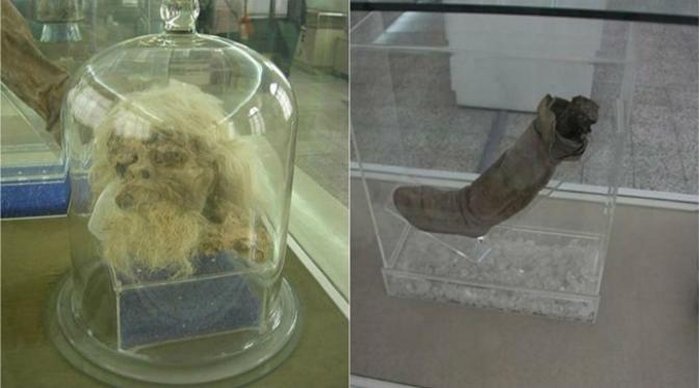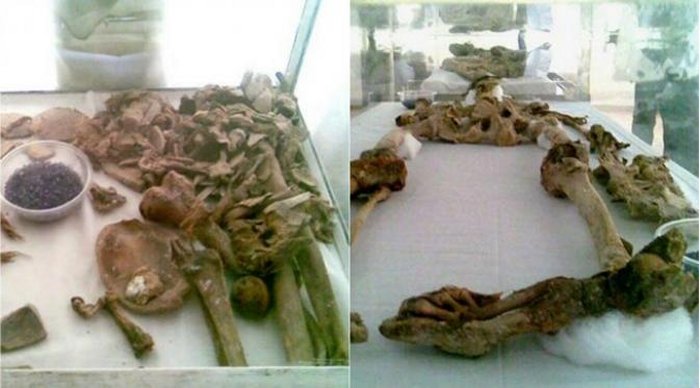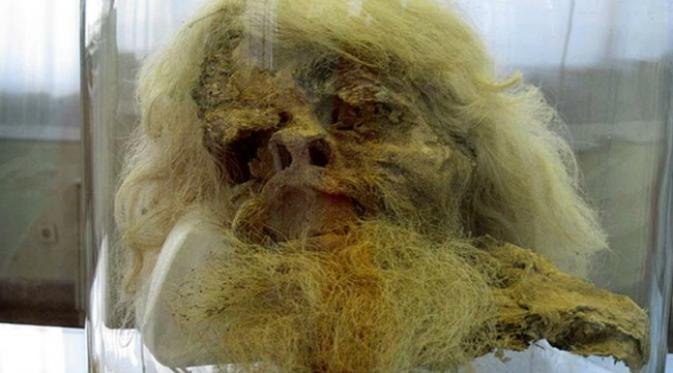Mystery Of The 1,700-Year-Old ‘Salt’ Mummy With Long White Hair
AncientPages.com - The mysterious 1,700-year-old “salt” mummy with long white hair is one died of natural causes inside a mine. He is very well-preserved and he met a tragic end and today we can only speculate about what happened to him.
Archaeologists have so far discovered 6 well-preserved in the salt mines Chehrabad that is located about 340 km from the capital city of Tehran, Iran.
The first “salt” mummy was discovered in 1994 along with some ancient artifacts such as iron blades and gold earrings.
The salt mummy is easily recognizable because of his long hair and a white beard. The man allegedly lived 1,700 years ago, at the time of the Government Tsani and died at the age between 35 and 40 years.
See also:
Mystery Of Lama Dashi-Dorzho Itigilov: A Mummy Whose Body Defies Time
Strange Mummies Of Venzone: Ancient Bodies That Never Decompose Remain An Unsolved Mystery
His head is today on display at the National Museum of Iran, Tehran. Some years later, in 2004 scientists came across more human remains in the mine. More ancient mummies were discovered in 2005, 2006 and 2007.
How these people died remains a mystery, but they died most likely due to an accident that happened in the mine.
Numerous studies have been conducted on the “salt” mummies and scientists hope these ancient human remains will help them learn more about ancient mining that took place in the region.
The identity of the deceased is also a mystery and we do not know if they were locals or foreigners who were brought to work in the salt mines.
Based on the artifacts discovered in the mine and the study of layers of salt, researchers think the mine was operating during three different time epochs and the mining practices were organized differently every time.
Scientists may not be able to study the “salt” mummy for much longer though. Some years ago, there was crack in the plexiglas box in which the mummy head is being kept. As a result of this, bacteria and insects entered the box and started to consume the remains.
Fortunately, the crack was discovered on time and a number of measures were carried out to prevent further damage, but how long the mummy will remain preserved is unknown.
Copyright © AncientPages.com All rights reserved. This material may not be published, broadcast, rewritten or redistributed in whole or part without the express written permission of AncientPages.com
Expand for referencesMore From Ancient Pages
-
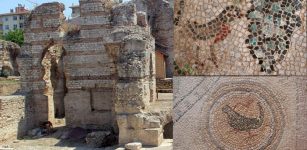 Beautiful Zeugma-Like Mosaics Unearthed In Sinop Province, Northern Turkey
Archaeology | Oct 17, 2020
Beautiful Zeugma-Like Mosaics Unearthed In Sinop Province, Northern Turkey
Archaeology | Oct 17, 2020 -
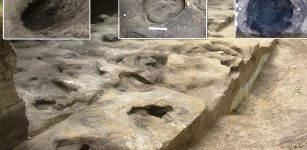 Sensational Discovery: 300,000-Year-Old Snapshot – Oldest Human Footprints From Germany Found
Fossils | May 12, 2023
Sensational Discovery: 300,000-Year-Old Snapshot – Oldest Human Footprints From Germany Found
Fossils | May 12, 2023 -
 Menes – Legendary First Monarch Probably Under Different Names Who Unified Egypt
Featured Stories | Nov 7, 2016
Menes – Legendary First Monarch Probably Under Different Names Who Unified Egypt
Featured Stories | Nov 7, 2016 -
 Mysterious Unknown Strange-Looking Ancient Seafarers – Survivors Of A Now Vanished Race?
Civilizations | Oct 11, 2022
Mysterious Unknown Strange-Looking Ancient Seafarers – Survivors Of A Now Vanished Race?
Civilizations | Oct 11, 2022 -
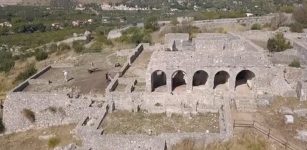 Was Beautiful Ancient City Of Terracina Home To The First Hellenistic Temple?
Archaeology | Dec 16, 2019
Was Beautiful Ancient City Of Terracina Home To The First Hellenistic Temple?
Archaeology | Dec 16, 2019 -
 Andalusia Was First Inhabited By Neolithic People From The Southern Part Of The Iberian Peninsula 6,200 Years Ago
Archaeology | Feb 26, 2024
Andalusia Was First Inhabited By Neolithic People From The Southern Part Of The Iberian Peninsula 6,200 Years Ago
Archaeology | Feb 26, 2024 -
 Women’s March On Versailles: One Of The Most Significant Events Of The French Revolution
Ancient History Facts | Oct 11, 2018
Women’s March On Versailles: One Of The Most Significant Events Of The French Revolution
Ancient History Facts | Oct 11, 2018 -
 Cambridge Supports Nigeria’s Claim For Return Of Benin Artefacts From University Collections
Archaeology | Aug 2, 2022
Cambridge Supports Nigeria’s Claim For Return Of Benin Artefacts From University Collections
Archaeology | Aug 2, 2022 -
 On This Day In History: Hubble Space Telescope Was Launched – On April 24, 1990
News | Apr 24, 2016
On This Day In History: Hubble Space Telescope Was Launched – On April 24, 1990
News | Apr 24, 2016 -
 Biblical Lydia ‘Woman Of Purple’ Who Run Her Own Business
Biblical Mysteries | Apr 9, 2019
Biblical Lydia ‘Woman Of Purple’ Who Run Her Own Business
Biblical Mysteries | Apr 9, 2019 -
 Michelangelo’s Hidden Secrets Under The Medici Chapel
Featured Stories | Jul 16, 2019
Michelangelo’s Hidden Secrets Under The Medici Chapel
Featured Stories | Jul 16, 2019 -
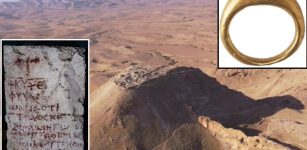 Byzantine Greek Inscription Of Psalms 86 Found In Hyrcania
Archaeology | Sep 29, 2023
Byzantine Greek Inscription Of Psalms 86 Found In Hyrcania
Archaeology | Sep 29, 2023 -
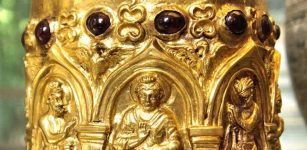 The Bimaran Casket – Rare Golden Artifact Found In Ancient Stupa
Artifacts | Dec 17, 2018
The Bimaran Casket – Rare Golden Artifact Found In Ancient Stupa
Artifacts | Dec 17, 2018 -
 Count Dracula: His Letters Helped Researchers Cast New Light On Health Of Legendary Figure
Historical Figures | Aug 17, 2023
Count Dracula: His Letters Helped Researchers Cast New Light On Health Of Legendary Figure
Historical Figures | Aug 17, 2023 -
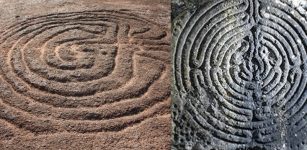 Intricate Mazes And Labyrinths: Mysterious Symbols Of Beauty And Confusion Or Communication Signals
Ancient Symbols | Jun 23, 2016
Intricate Mazes And Labyrinths: Mysterious Symbols Of Beauty And Confusion Or Communication Signals
Ancient Symbols | Jun 23, 2016 -
 Astronomer Johannes Kepler Saved His Mother From Being Burned As A Witch
Featured Stories | Jan 21, 2017
Astronomer Johannes Kepler Saved His Mother From Being Burned As A Witch
Featured Stories | Jan 21, 2017 -
 Luna Settlement: First Multi-Year European Settlement Identified In Pensacola, Florida
Archaeology | Dec 26, 2015
Luna Settlement: First Multi-Year European Settlement Identified In Pensacola, Florida
Archaeology | Dec 26, 2015 -
 Who Were The Hoplites And What Was Their Armor Composed Of?
Ancient History Facts | Apr 20, 2018
Who Were The Hoplites And What Was Their Armor Composed Of?
Ancient History Facts | Apr 20, 2018 -
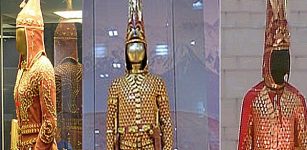 ‘Golden Man’ – Sak Warrior Covered With Thousands Of Pieces Of Gold – More Light On Gold Techniques Used In Kazakhstan
Archaeology | Jan 9, 2019
‘Golden Man’ – Sak Warrior Covered With Thousands Of Pieces Of Gold – More Light On Gold Techniques Used In Kazakhstan
Archaeology | Jan 9, 2019 -
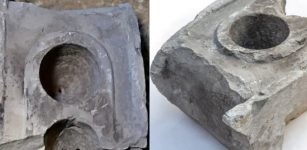 2,000-Year-Old Measuring Table With Stone Weights Unearthed In Jerusalem
Archaeology | Jan 16, 2020
2,000-Year-Old Measuring Table With Stone Weights Unearthed In Jerusalem
Archaeology | Jan 16, 2020

